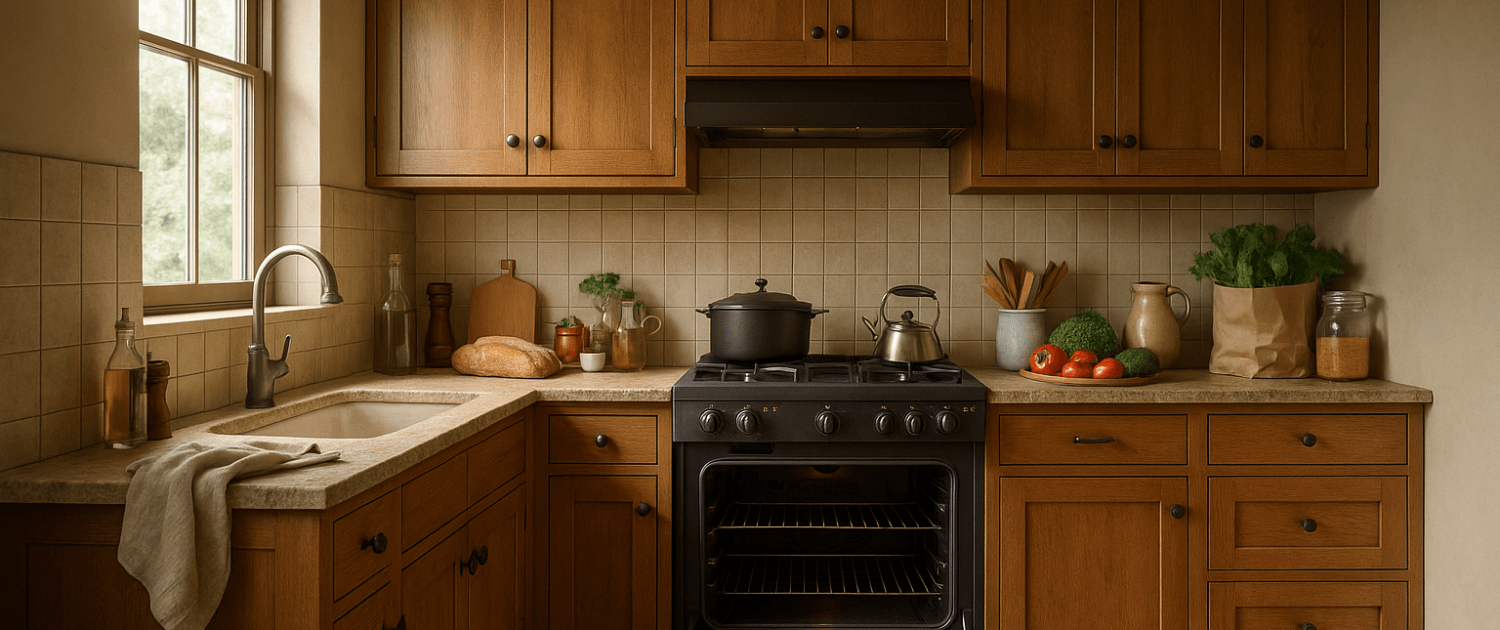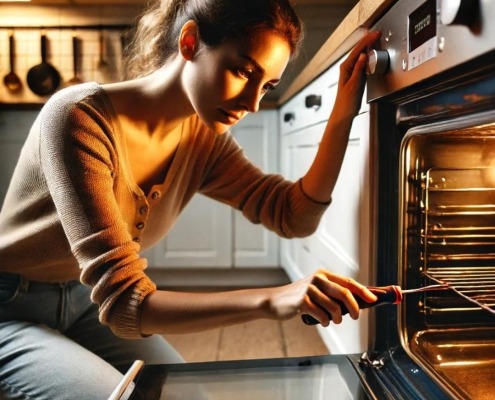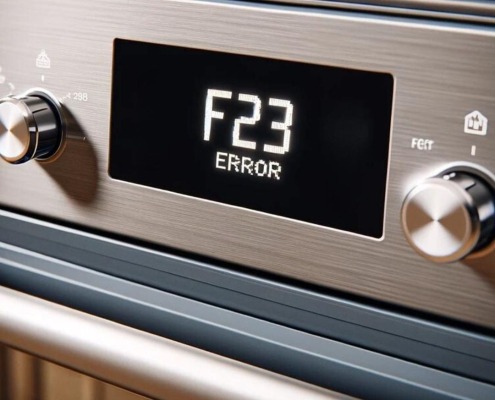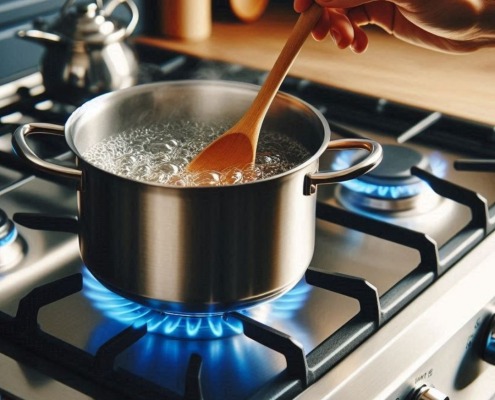Why Soot Buildup Around Your Gas Oven Door Is a Red Flag
Steven E / Tuesday July 15, 2025
If you’ve noticed black, powdery soot around the door of your gas oven, you’re right to be concerned. That sooty residue isn’t just an eyesore; it’s a clear warning sign that something in your oven isn’t working as it should. We’ll break down what causes soot buildup, why you should take it seriously, and what you can do to fix it yourself.
What Does Soot Around the Oven Door Mean?
When a gas oven is working properly, it burns fuel cleanly, producing heat, water vapor, and carbon dioxide. But when the flame doesn’t get the right balance of gas and air, known as an incomplete burn, it produces carbon particles, which you see as soot.
This soot can settle on the oven walls, racks, cookware, and especially around the door seal, where heat and pressure can push it out.
Here’s why that’s a red flag:
- It signals poor combustion, which can lower your oven’s efficiency.
- It could indicate clogged or malfunctioning burner parts.
- It may also mean gas is leaking or pooling, which is dangerous.
In short, soot means your oven isn’t burning gas properly, and it’s time to investigate.
Why Incomplete Combustion Happens
The most common causes of soot in a gas oven are related to how the burners mix gas and air. If there’s too much gas, too little air, or the flame is obstructed, you’ll get incomplete combustion.
Here are some of the most common culprits:
- Dirty or Clogged Burner: Food debris, grease, and even dust can block the small holes in your oven’s burner, disrupting the flame pattern and airflow.
- Misaligned Burner: If the burner is slightly out of position, the gas flow and flame can be uneven. This can happen if the burner gets bumped or is not seated properly after cleaning.
- Faulty or Dirty Orifice: The orifice is the small opening where gas enters the burner. If it’s dirty, partially blocked, or damaged, it can deliver too much gas and not enough air.
- Blocked Air Shutter: The air shutter is an adjustable part near the burner that controls how much air mixes with the gas. If it’s closed too much or clogged, the flame won’t burn cleanly.
- Wrong Gas Pressure: If your home’s gas supply pressure is incorrect or your oven is improperly converted between natural gas and propane, it can throw off the flame’s balance.
Why You Shouldn’t Ignore It
Aside from being messy, soot can lead to bigger problems if ignored. Here’s why you want to tackle it quickly:
- Safety Risk: Incomplete combustion can produce carbon monoxide, an odorless, deadly gas.
- Poor Cooking Performance: An uneven flame can cause hot and cold spots, undercooked or burnt food.
- Higher Gas Bills: Your oven has to work harder and longer, using more gas to reach the desired temperature.
- Damage to Parts: Soot buildup can clog vents, damage gaskets, and stain oven surfaces.
By catching and fixing the problem early, you protect your home, your health, and your appliance.
How to Diagnose the Issue
The good news is you don’t need fancy tools to get started. Here’s how to pinpoint the source of the soot.
Inspect the Flame
Open the oven and turn it on. Take a look at the flame on the burner:
- A healthy flame should be mostly blue with maybe a small orange tip.
- A yellow, orange, or very tall flame means incomplete combustion.
- An uneven flame pattern or flames “lifting” off the burner also indicates trouble.
Check for Blockages
With the oven cool and turned off:
- Remove the oven racks and inspect the burner. Look for food particles, grease, or debris clogging the holes.
- Check the air shutter opening near the burner tube for obstructions.
- Make sure the burner itself is seated correctly and not crooked.
Smell for Gas
If you smell raw gas when the oven is off or notice a strong smell when it’s running, stop and shut off the gas supply. You could have a leak, which needs to be fixed immediately.
Cleaning and Adjustments
Once you’ve identified the likely cause, you can move on to fixing it. Most soot problems are caused by dirt and misalignment, both of which you can fix at home.
Clean the Burner
- Remove the burner by sliding it out carefully.
- Use a soft brush or a toothbrush to clear debris from the holes.
- For stubborn grease, soak the burner in warm soapy water, then rinse and dry thoroughly.
Clean the Orifice
- The orifice is usually a small brass part at the end of the burner tube.
- If it’s dirty, use a soft cloth or a thin wire to clear it.
- Never enlarge the opening; it’s calibrated for the right gas flow.
Adjust the Air Shutter
- Locate the air shutter near where the burner tube meets the orifice.
- Loosen the locking screw and rotate the shutter to open or close the air supply slightly.
- Test the flame after each adjustment until it’s steady and blue.
Reassemble and Test
Put all the parts back in place, making sure everything is seated properly. Turn on the oven and check the flame again. If it’s still not burning cleanly, you may have a deeper issue, like gas pressure problems.
When Parts Need Replacing
Sometimes cleaning and adjusting aren’t enough because a part is worn or damaged. If that’s the case, you can still handle it yourself with the right replacement part.
Here are a few parts you might need to replace to fix soot problems:
- Burner: If the burner is warped or corroded, replace it with a new one designed for your model.
- Orifice: If the orifice is cracked, stripped, or wrong for your gas type, get a replacement.
- Air Shutter: If the air shutter is bent or won’t stay in position, it’s time for a new one.
- Gasket: If the oven door gasket is damaged, soot and heat can escape. Replacing the gasket can help seal the oven properly.
Always double-check your oven’s model number and gas type when ordering replacement parts.
How to Prevent Soot Buildup in the Future
Once you’ve cleaned up the soot and fixed the underlying cause, you’ll want to keep it from coming back. These habits can help:
- Wipe up spills as soon as the oven cools.
- Clean the burner and air openings regularly to prevent grease buildup.
- Take a peek at the flame every so often to make sure it stays blue and steady.
- Avoid lining the bottom of your oven with foil, which can restrict airflow and throw off combustion.
Where To Find Us
If you need any replacement parts for your appliances, you can enter your model number at AppliancePartsPros.com to locate and order them quickly. Most orders arrive in just two business days, and we have tons of great information in our repair help section and YouTube videos to help you troubleshoot.
Stay connected with the latest DIY tips, tutorial videos, and repair guides by following us on Facebook, Instagram, and Twitter. We love hearing about your repair stories and successes. If you need more help or want personalized guidance, feel free to reach out. We’re ready to help you take on your next project with confidence!
With nearly a decade of experience in providing top-notch customer service regarding appliance parts and repair, Steven enjoys sharing practical advice, troubleshooting tips, and interesting information to help readers stay informed.





